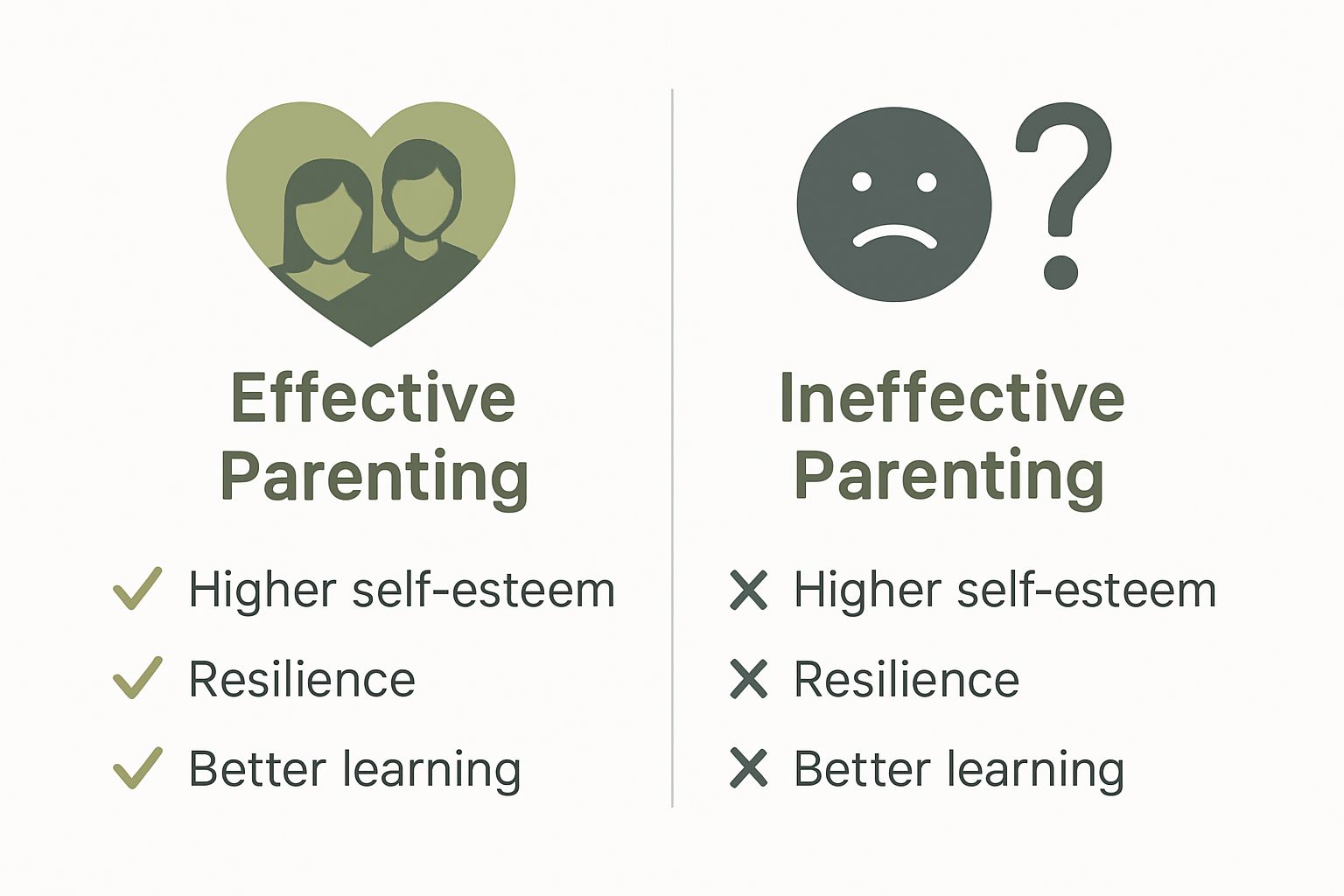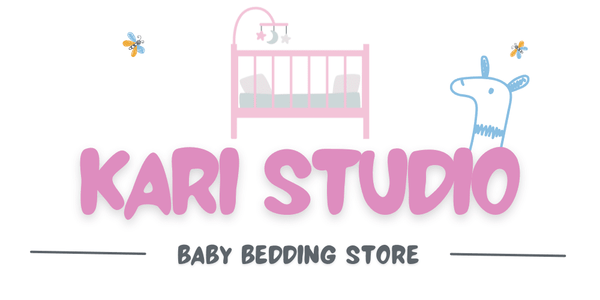Parenting shapes the way children grow and think, yet most people never realize how deep this influence runs. You might think teaching good manners or healthy routines is the real secret. Here is the shocker though. Supporting parenting early on actually builds neurological pathways in the brain that set the stage for emotional regulation, learning, and social skills. Parenting does not just raise a child, it rewires a future adult’s brain from the start.
Table of Contents
- What Is Parenting And Why Does It Matter?
- Understanding Infant Development Milestones
- The Importance Of Bonding With Your Baby
- Navigating Sleep Patterns And Routines
- Creating A Safe And Nurturing Environment
Quick Summary
| Takeaway | Explanation |
|---|---|
| Effective parenting shapes future outcomes | Nurturing and supportive parenting fosters resilience, self-esteem, and better problem-solving skills in children. |
| Bonding enhances emotional intelligence | Strong emotional connections from responsive interactions lead to better stress management and self-confidence in children. |
| Establish consistent sleep routines | Predictable pre-sleep rituals help infants develop healthier sleep patterns, improving overall well-being and emotional regulation. |
| Create a safe and nurturing environment | A thoughtfully designed space supports both physical safety and emotional growth, essential for healthy child development. |
| Track infant development milestones | Understanding milestones helps parents provide appropriate support and recognize when professional guidance may be needed. |
What is Parenting and Why Does it Matter?
Parenting represents one of humanity’s most profound responsibilities, involving the nurturing, guidance, and comprehensive development of children from infancy through adulthood. More than a biological function, parenting is a complex emotional, psychological, and social process that shapes future generations.
The Core Definition of Parenting
At its fundamental level, parenting involves providing physical care, emotional support, and psychological guidance to children. According to Child Development Experts at American Psychological Association, parenting extends beyond basic survival needs to include critical elements of emotional and intellectual development. Parents serve as primary educators, role models, and emotional anchors who help children understand themselves and navigate the world around them.
Key aspects of parenting include:
- Providing physical safety and nutritional needs
- Offering emotional support and unconditional love
- Teaching fundamental life skills and values
- Facilitating social and cognitive development
- Preparing children for independence
The Significance of Effective Parenting
Research from Harvard Center on the Developing Child demonstrates that early childhood experiences fundamentally shape brain architecture and future life outcomes. Consistent, responsive parenting creates neurological pathways that support emotional regulation, learning capabilities, and social interactions. Children who receive supportive parenting are more likely to develop resilience, higher self-esteem, and better problem-solving skills.

The impact of parenting reverberates through generations. By investing time, emotional energy, and intentional guidance, parents contribute not just to individual child development but to broader societal progress. Every interaction, every moment of patience, every lesson shared becomes a building block for a child’s future potential.
Understanding Infant Development Milestones
Infant development represents a complex and remarkable journey of physical, cognitive, and emotional growth that occurs rapidly during the first twelve months of life. Understanding these milestones helps parents track their child’s progress and identify potential areas requiring additional support or professional guidance.
Physical and Motor Skill Development
During the first year, infants experience extraordinary physical transformations. According to Centers for Disease Control and Prevention, motor skill development follows a predictable progression. Typically, infants achieve key physical milestones that demonstrate increasing muscle control and neurological coordination.
Key physical development milestones include:
- Lifting head during tummy time
- Rolling over independently
- Sitting without support
- Crawling or scooting
- Standing with assistance
- Taking first independent steps
Cognitive and Social Skill Progression
Brain development occurs at an astonishing rate during infancy, with neural connections forming rapidly based on environmental interactions and sensory experiences. Research from Stanford University indicates that early experiences significantly impact cognitive development and future learning capabilities.
Cognitive milestones encompass more than physical achievements. They involve complex processes like:
- Recognizing familiar faces
- Responding to emotional cues
- Understanding basic cause-and-effect relationships
- Developing communication skills
- Demonstrating curiosity about surroundings
Parents can support developmental progress by creating stimulating environments, engaging in interactive play, and reading more about infant transition stages. Each child develops uniquely, so while these milestones provide general guidance, individual variation is perfectly normal and expected.
To clarify the types of infant development discussed, the following table organizes key physical and cognitive/social milestones mentioned in the article for easy comparison.
| Milestone Type | Example Milestones |
|---|---|
| Physical/Motor Skills | Lifting head during tummy time, rolling over, sitting without support, crawling or scooting, standing with assistance, taking first steps |
| Cognitive/Social Skills | Recognizing familiar faces, responding to emotional cues, understanding cause-and-effect, developing communication skills, demonstrating curiosity |
The Importance of Bonding with Your Baby
Bonding represents a profound emotional connection between parents and infants that goes far beyond mere physical care. This intricate process of attachment forms the foundation of a child’s emotional intelligence, psychological security, and future interpersonal relationships.
Understanding Emotional Connection
Emotional bonding occurs through consistent, responsive interactions that communicate love, safety, and understanding. Zero to Three Organization emphasizes that these early connections fundamentally shape a child’s neurological and emotional development. Babies who experience secure attachment develop greater resilience, self-confidence, and emotional regulation skills.
Key elements of emotional bonding include:
- Consistent physical touch and gentle handling
- Responding promptly to infant’s needs
- Maintaining eye contact during interactions
- Speaking softly and lovingly
- Creating predictable comfort routines
Neurological and Psychological Benefits
Scientific research reveals that bonding triggers complex neurochemical processes. Oxytocin, often called the “love hormone,” is released during close physical interactions, promoting feelings of trust and emotional connection. Understanding dads’ role in bonding becomes crucial, as both parents contribute to the child’s emotional development.
Bonding activities significantly impact long-term psychological outcomes. Children who experience strong early attachments are more likely to:
- Develop healthy relationships
- Demonstrate emotional intelligence
- Handle stress more effectively
- Build stronger self-esteem
- Communicate emotions more clearly
Every moment of connection matters. Whether through feeding, cuddling, or gentle play, parents create a foundation of trust that will support their child’s emotional journey throughout life.
Navigating Sleep Patterns and Routines
Sleep represents a critical component of infant health and development, influencing everything from growth and learning to emotional regulation. Understanding and establishing healthy sleep patterns requires patience, consistency, and an appreciation of an infant’s unique biological rhythms.
Understanding Infant Sleep Cycles
Newborns experience dramatically different sleep patterns compared to older children and adults. Their sleep cycles are shorter, more fragmented, and heavily influenced by nutritional needs and developmental stages. American Academy of Pediatrics notes that infants typically sleep between 14-17 hours per day, though not consecutively.
Key characteristics of infant sleep include:
- Irregular sleep-wake cycles
- Frequent nighttime feedings
- Shorter sleep duration per cycle
- Higher proportion of REM sleep
- Gradual development of circadian rhythms
Creating Effective Sleep Routines
Establishing consistent sleep routines helps regulate an infant’s internal clock and promotes better sleep quality. Predictable pre-sleep rituals signal to babies that it is time to rest, reducing anxiety and facilitating smoother transitions. Parents can enhance sleep environments by exploring optimal nursery setup strategies, which contribute to more restful sleep.
Strategic sleep routine elements include:
- Consistent bedtime hour
- Calm, quiet pre-sleep activities
- Gentle lullabies or soft music
- Comfortable sleep temperature
- Minimal external stimulation
Successful sleep management requires flexibility and understanding that each infant’s sleep pattern is unique. By observing individual cues and maintaining gentle, consistent approaches, parents can support healthy sleep development throughout their child’s early years.
Creating a Safe and Nurturing Environment
A baby’s environment profoundly impacts their physical safety, emotional development, and overall well-being. Creating a nurturing space involves more than simply baby-proofing rooms it requires thoughtful design that supports physical protection and emotional growth.
Physical Safety Foundations
Infant safety demands comprehensive and proactive planning. According to Consumer Product Safety Commission, parents must anticipate potential hazards and implement protective strategies before babies become mobile. Physical safety encompasses multiple dimensions of home environment management.
Critical physical safety considerations include:
- Securing furniture to prevent tipping
- Covering electrical outlets
- Installing safety gates on stairs
- Removing small objects that pose choking risks
- Maintaining consistent room temperatures
- Using cordless window treatments
Emotional Nurturing Strategies
Beyond physical protections, emotional environments significantly influence infant development. Consistent, responsive caregiving creates psychological safety that supports healthy emotional and cognitive growth. Parents can explore creative nursery design ideas that balance aesthetic appeal with developmental considerations.
Key emotional nurturing elements include:
- Creating predictable daily routines
- Maintaining calm, low-stimulation spaces
- Using soft, soothing color palettes
- Positioning furniture to facilitate interaction
- Incorporating sensory-appropriate stimulation
Successful environmental design recognizes that babies require both physical protection and emotional engagement. By intentionally crafting spaces that feel simultaneously secure and stimulating, parents lay groundwork for healthy developmental experiences.
Here is a table summarizing core features and strategies for creating a physically safe versus an emotionally nurturing environment for infants, based on the article sections covering safety and emotional support.
| Environment Aspect | Core Features | Example Strategies |
|---|---|---|
| Physical Safety | Protection from hazards | Securing furniture, covering outlets, removing choking risks |
| Emotional Nurturing | Psychological security & comfort | Creating routines, using soothing colors, maintaining calm spaces |

Give Your Baby the Safe and Cozy Start They Deserve
As a first-time parent, one of your biggest challenges is creating a nurturing environment that balances both safety and comfort. The article covers crucial topics like infant development milestones, emotional bonding, and the importance of a secure nursery space. We understand how overwhelming it can feel to protect your baby as they explore new phases, especially when it comes to their sleep environment.

Ready to take the guesswork out of nursery safety? Visit our braided crib bumper collection to discover solutions designed to protect your little one while adding a soothing touch to their sleep space. Our expertly crafted products support your goals for safe, smooth infant development. Make your first steps as a parent easier and give your baby the comfort they need. Shop now at Kari Studio and experience true peace of mind.
Frequently Asked Questions
What are the key milestones to look for in infant development?
Infant development milestones include lifting their head during tummy time, rolling over independently, sitting without support, crawling or scooting, standing with assistance, and taking first independent steps. Cognitively, infants may start recognizing familiar faces, responding to emotional cues, and developing basic communication skills by the end of their first year.
How can I effectively bond with my newborn?
Bonding with your newborn can be fostered through consistent, responsive interactions like gentle handling, maintaining eye contact, and speaking softly. Engaging in physical touch and creating predictable comfort routines can significantly strengthen the emotional connection between parents and their baby.
What sleep routines are recommended for infants?
Establishing a consistent bedtime and creating calming pre-sleep activities, such as gentle lullabies or soft music, can help infants develop better sleep patterns. Monitoring the sleep environment for optimal temperature and minimizing stimulation also play crucial roles in promoting restful sleep for your baby.
What should I consider when creating a safe environment for my baby?
To create a safe environment for your baby, ensure physical safety by securing furniture, covering electrical outlets, and removing choking hazards. Additionally, providing emotional nurturing through predictable routines, maintaining a calm space, and incorporating sensory-appropriate stimulation is essential for healthy infant development.

